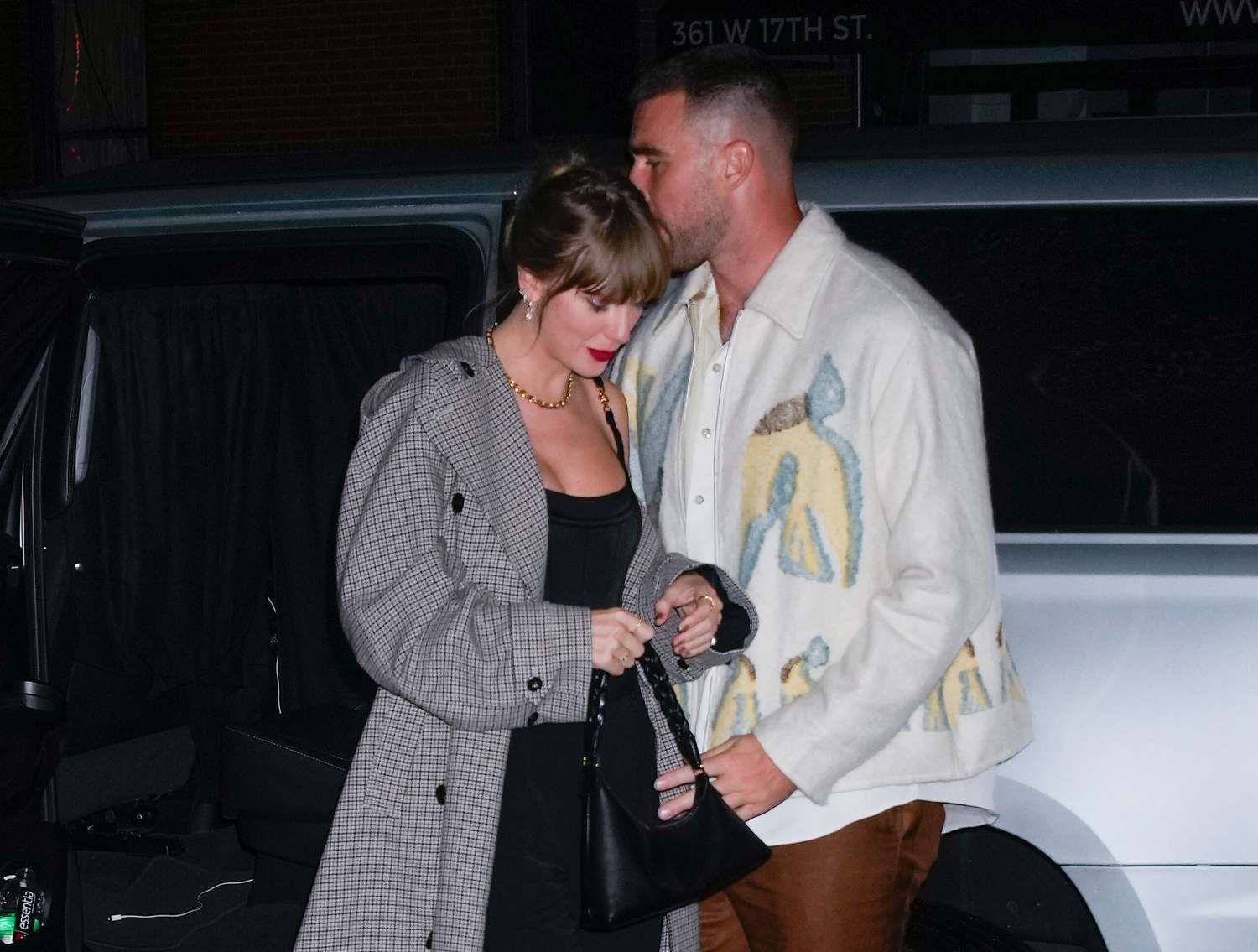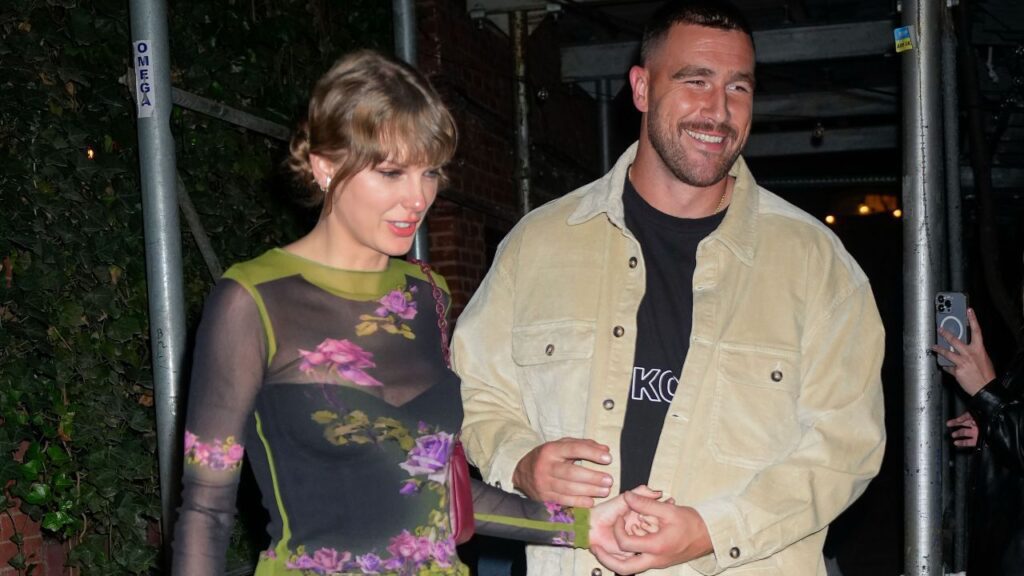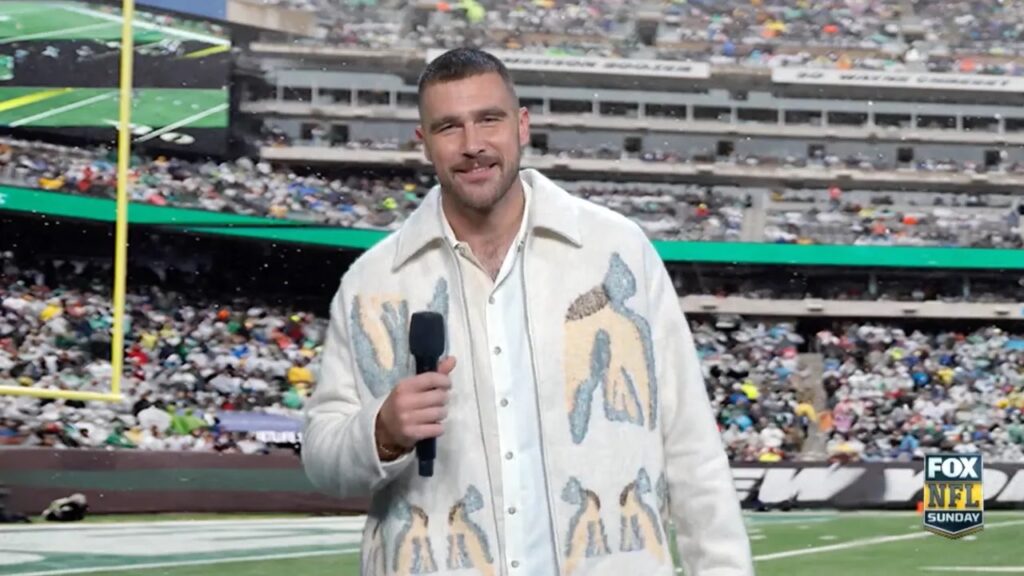
Could Travis Kelce make Taylor Swift a billionaire? Inside his net worth
Ever thought about the undeniable spark that emerges when pop culture and sports collide headfirst into a sea of fandom joy? That’s precisely the dazzling spectacle we’re witnessing as Taylor Swift, the pop sovereign, and Travis Kelce, the NFL maestro, unintentionally twirl into each other’s universes, sparking a fascinating entwinement of fan worlds and economic booms.
Welcome to the era where “Traylor” isn’t just a ship, but an anchor of a cultural and economic marvel, stirring the seemingly stagnant waters of our current times. But how does that play into the player’s net worth? Let’s take a dive into his net worth and see how they stack up against Taylor.

Touchdown with a Pop Star Gleam
Travis Kelce, a tight end for the Kansas City Chiefs since 2013, holds an impressive career punctuated by several NFL records, such as being the speediest tight end to attain 10,000 career receiving yards.
With a neat net worth of thirty million dollars and a prosperous career to boast, including a four-year, $3.12 million deal with the Chiefs, and later, a whopping five-year, $46 million extension, Kelce’s name is familiar amongst football enthusiasts. However, his stardom recently skyrocketed into a different universe – courtesy of the Swifties. Cue the net worth numbers!

In a socio-economic environment which, for many industries, appeared stark and bleak, the unanticipated intermingling of Taylor’s fandom with Kelce’s brought a surprisingly positive uplift. Summer 2019 saw Taylor’s “Eras Tour” become a beacon, demonstrating that even in trying times, fans (and their wallets) will flock where their idols tread.
Her tour didn’t just light up stages, but also brightened the economic prospects of every entity that danced within the Swiftian universe.

The Fandom Phenomenon
The sheer power of the Swifties (Taylor Swift’s ultra-devoted fanbase) has been significantly palpable, providing a financial oasis in otherwise dry terrain. A mere attendance of Taylor at a Chiefs-Bears game managed to divert attention from Usher’s Halftime Show performer announcement, narrating just how powerful the pop star’s presence can be. It’s not just a game anymore – it’s a cultural event!
Swiftie Erica Finley encapsulates the collective spirit eloquently, expressing that spending within the “Taylorverse” combines a cocktail of fear of missing out, joy in community, and a genuine love for an artist who has soundtracked various seasons of life.
Swift’s connection with her fans isn’t merely superficial; it’s a deep-rooted community where every purchase, every ticket, every piece of merchandise, becomes a treasured part of a larger, shared experience.

Brands at the Intersection of Fandoms
As Taylor unintentionally bridges the gap between pop culture and the sports world, brands are hurriedly catching up, discerning the substantial possibilities that lie in the nexus of these fervent fan worlds.
Taking cues, several have skillfully intertwined their marketing strategies with these shared moments, wisely acknowledging and riding the wave of the cultural influx Swift and her fans bring into the space.
Take Gritty (the Philadelphia Flyer’s mascot) and Jake from State Farm, for instance. By integrating themselves into this unique cultural moment, they demonstrate not only their adept comprehension of Taylor Swift and her fandom’s power but also their willingness to engage, play along, and co-create moments that weave into the cultural tapestry.

Bridging Worlds and Winning Fans
Pop culture and sports are no longer discrete entities operating in parallel universes, but intersecting worlds where brands can dive into the fray, fostering new connections and etching their presence into pivotal cultural moments.
The integration of these worlds doesn’t just offer brands a fleeting spot in the limelight, but an invitation to participate in an ongoing cultural dialogue, where their willingness to play along, to empathize, and to be present, becomes their ticket to relevance and connection.

However, the key to successful engagement lies in genuine interaction and an authentic understanding of the cultural landscapes they’re venturing into. It’s not merely about seizing an opportunity but understanding the pulse, the ebb and flow of fandoms, and conscientiously embedding themselves within these waves.
How will brands navigate these dynamically converging fan worlds, and will they manage to become an authentic part of the ongoing narrative, or merely remain transient visitors in the rich, intertwined worlds of sports and pop culture?



